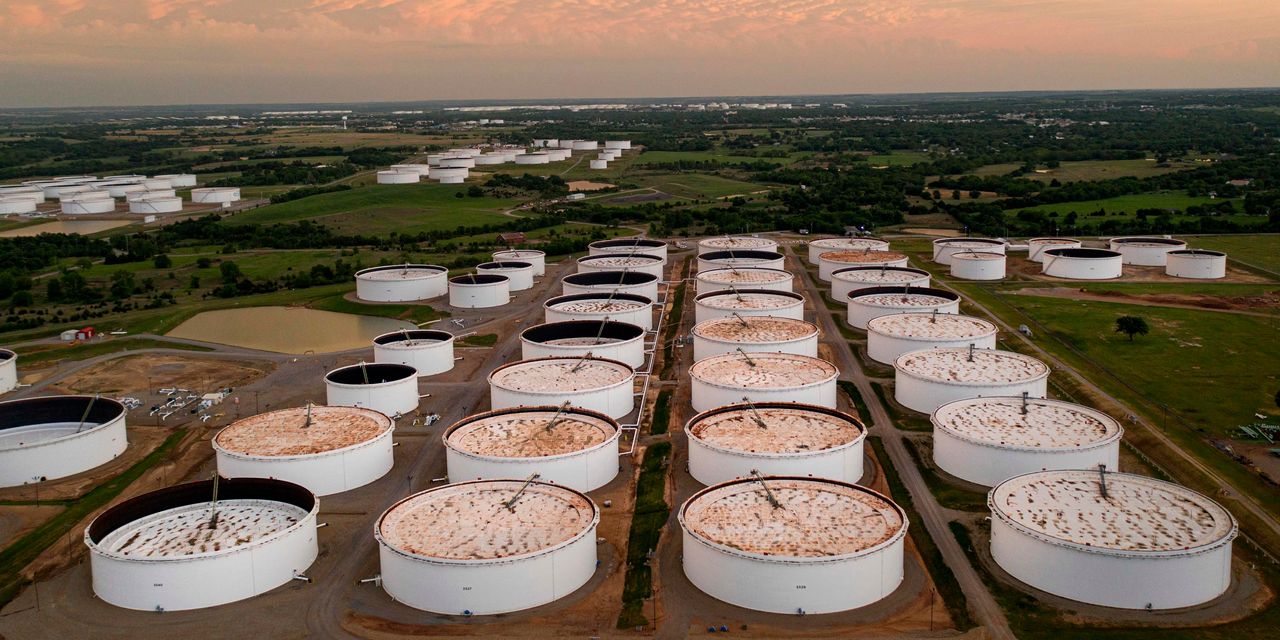Oil futures fell for a third straight day Wednesday, after spending much of the session bouncing between small gains and losses, extending a pullback attributed to worries about China’s economic outlook.
Investors also weighed official data that showed a larger-than-expected drop in U.S. crude inventories last week.
Price action
-
West Texas Intermediate crude for September delivery
CL00,
+0.15% CL.1,
+0.15% CLU23,
+0.15%
fell $1.61, or 2%, to end at 79.38 a barrel on the New York Mercantile Exchange. -
October Brent
BRN00,
-0.04% BRNV23,
-0.04% ,
the global benchmark, dropped $1.44, or 1.7%, to settle at $83.45 a barrel on ICE Futures Europe. -
Back on Nymex, September gasoline
RBU23,
-0.07%
rose 0.7% to $2.8671 a gallon, while September heating oil
HOU23,
+0.59%
shed 0.2% to $3.021 a gallon. -
September natural gas
NGU23,
-0.04%
dropped 2.5% to $2.592 per million British thermal units.
Market drivers
The Energy Information Administration on Wednesday said U.S. crude inventories fell by nearly 6 million barrels in the week ended Aug. 11. Gasoline inventories fell 300,000 barrels, while distillate stocks rose by 300,000 barrels, the government said.
Analysts surveyed by S&P Global Commodity Insights, on average, had forecast crude inventories to show a 2.26 million barrel drop. Gasoline stocks were seen down 1.6 million barrels, with distillates mostly unchanged.
The American Petroleum Institute late Tuesday said U.S. crude inventories fell by 6.2 million barrels last week, according to a source citing the data, with gasoline inventories up 700,000 barrels and distillate stocks down 800,000 barrels.
Meanwhile, a string of disappointing China data and worries about the country’s property sector have sparked concern about demand from the world’s second-largest oil consumer. That’s served to dampen a crude rally that’s seen WTI and Brent score seven straight weekly gains.
The run-up has been driven by expectations for a supply deficit in the second half of the year, enhanced by production cuts by OPEC+ — made up of the Organization of the Petroleum Exporting Countries and its allies, including Russia. In particular, Saudi Arabia implemented a production cut of 1 million barrels a day in July and recently extended it through September, while Russia has also moved to additionally curb crude exports.
“Despite analysts expecting supply to tighten in the second half of the year, recession fears and the sluggish economic recovery in China are currently dominating the mood in the oil market. Longer term, some of the key market factors affecting prices suggest a less rosy outlook for oil and retail investors seem to be responding with caution,” said Michael Hall, head of distribution at Spectrum Markets, a Frankfurt-based trading venue for securitized derivatives.
Read the full article here



